On January 7, 2018, James Martin posted to his official Facebook page, an “icon” by Franciscan artist Br. Robert Lentz depicting Philip Berrigan and Daniel Berrigan; biological brother priests; neither of whom has a cause open for sainthood. The Berrigan brothers became famous in the 1960s as anti-Vietnam War peace activists who sometimes resorted to extreme tactics; according to court records, during a 1981 incident in which the Berrigans and several others trespassed into a General Electric plant while protesting the manufacture of the “Minuteman” missile, they poured human blood over the premises. In 1970, while still under vows from the Josephite Fathers, Philip Berrigan married a former nun; he died in 2002. His brother Daniel became involved in the gay-liberation movement as early as the late-1960s; he later became an activist for the LGBT community and those suffering from AIDS; in 1997, concerning homosexuality and the Catholic Church, Berrigan said:
The church remains for the present adamant: against serious peacemaking, against the gay community. But in these matters, each in its own way a matter of life and death, it cannot be said that the church speaks for Christ. It could even be said that the church speaks in contrariety to Christ…We think of the church, and the official treatment of many, and then we think of Christ…We are struck by a contrast. The church rejects, ostracizes, places certain people beyond the pale; on a lifelong basis.
Berrigan died in 2016 at age 94.
The artist who created the “icon” of the Berrigans is Robert Lentz. Talented, but incredibly misguided, Lentz often paints icons of the so-called “gay saints;” probably the most famous of these portraits depicts the late gay rights activist Harvey Milk. According to one critic: “The icon of Harvey Milk, Martyr is a national gay treasure.”
Concerning homosexuality and the Harvey Milk icon, according to Lentz’s official website:
Regardless of his commitment to God’s poor and the price he [Milk] was willing to pay for that commitment, many Christians are unwilling to forgive Harvey Milk’s sexual orientation. His icon disturbs them deeply…The Jewish Scriptures make negative references to homosexuality, as do some letters attributed to St. Paul. Modern scholars debate what these passages actually mean. There was a time when Christians thought epilepsy was demon-possession, based on their reading of the Bible. There was a time when it was heresy to believe the earth revolved around the sun.
Another “gay” subject explored by Lentz is his interpretation of Sts. Sergius and Bacchus; see picture above. Lentz’s icon contains the following description:
Sts. Sergius and Bacchus are ancient Christian martyrs who were tortured to death in Syria because they refused to attend sacrifices in honor of Jupiter. Recent attention to early Greek manuscripts has also revealed that they were openly gay men. These manuscripts indicate acceptance of homosexuality by earlier Christians. Bacchus died first and appeared that night to Sergius who was beginning to consider giving in to his torturers. Bacchus told Sergius to persevere, that the delights of heaven were greater than any suffering, and that part of their reward would be to be reunited in heaven as lovers.
The icon was posted, with a similar expanded description, to the official Facebook page of St. Cecilia’s Rainbow Ministry in the Archdiocese of Boston; a related homoerotic icon by Lentz of Sts. Perpetua and Felicity was posted to the Facebook page of Out at St. Paul in the Archdiocese of New York; this ministry once asked: “Who’s your favorite queer saint?” James Martin recently spoke at both parishes during his book tour for “Building a Bridge: How the Catholic Church and the LGBT Community Can Enter into a Relationship of Respect, Compassion, and Sensitivity.”
But one of Lentz’s most controversial works is entitled “Lord of the Dance;” in fact, reproductions of the icon are no long sold by his officially licensed on-line distributor. The icon portrays Jesus Christ as an amalgam of pre-Christina pagan and Catholic imagery: sitting cross-legged, wearing antler horns, and completely nude. Before it was removed, the icon included the following description:
One of the most ancient masculine images of God in Europe is a benign antlered figure. This image predates Celtic civilization, but was embraced by the Celts for its beauty and truth… Christian missionaries tried to stamp out the image of the horned god when they came to northern lands. Monastic scribes re-told ancient legends with an increasingly sinister twist. In time, the Horned God was pictured in the popular imagination as a demonic figure who rode through the night skies in search of damned souls.
Lentz belongs to the Franciscan Friars of the Holy Name Province; they maintain highly gay-affirmative ministries at several parishes, including: St. Patrick – St. Anthony Church in Hartford, Connecticut, St. Francis of Assisi in New York City, St. Anthony Shrine in Boston, and at St. Francis of Assisi Parish in Raleigh. In 2017, The LGBT Book Club at St. Patrick – St. Anthony Church promoted and read a book about “Discovering the Queer Christ.”
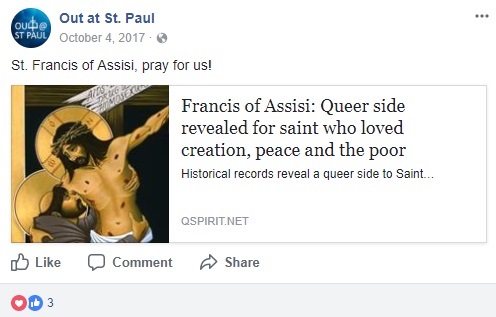
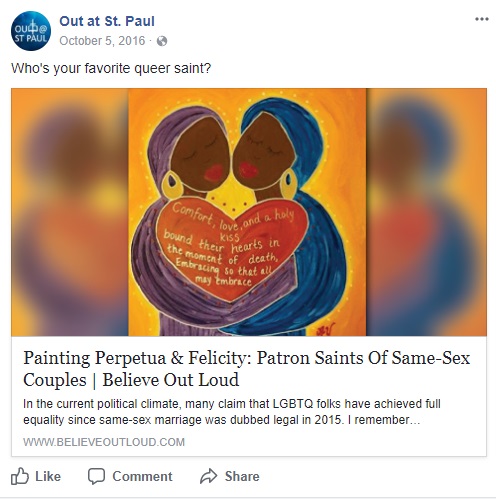
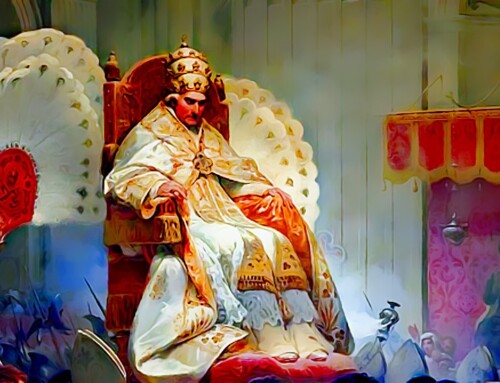
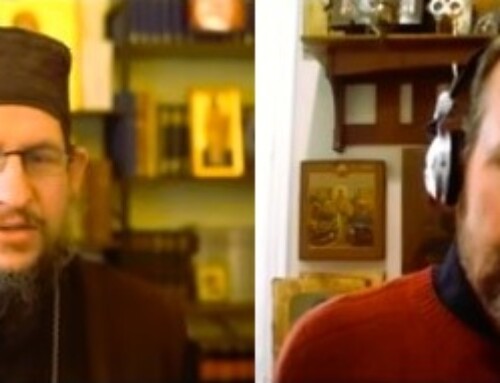
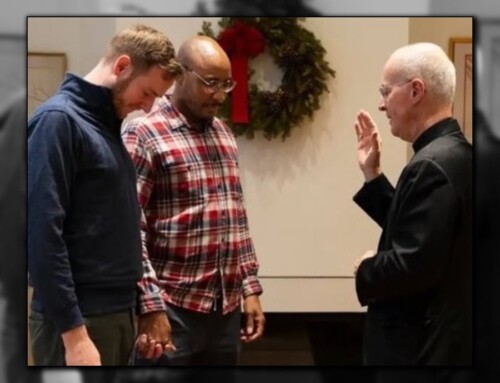
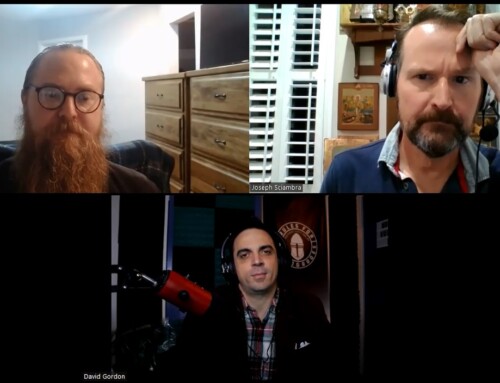
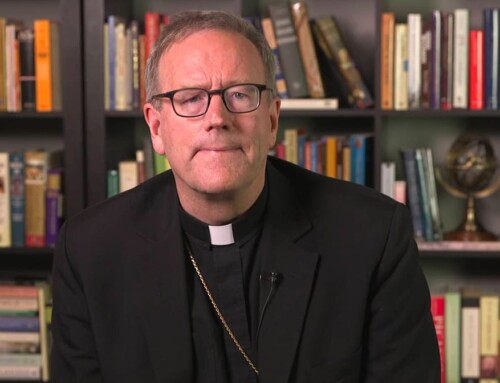
The degeneracy of telling blasphemous tales against the beloved Saints of God will return to haunt these “priests”.